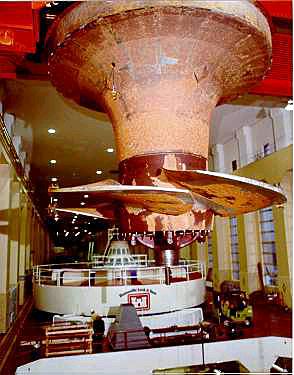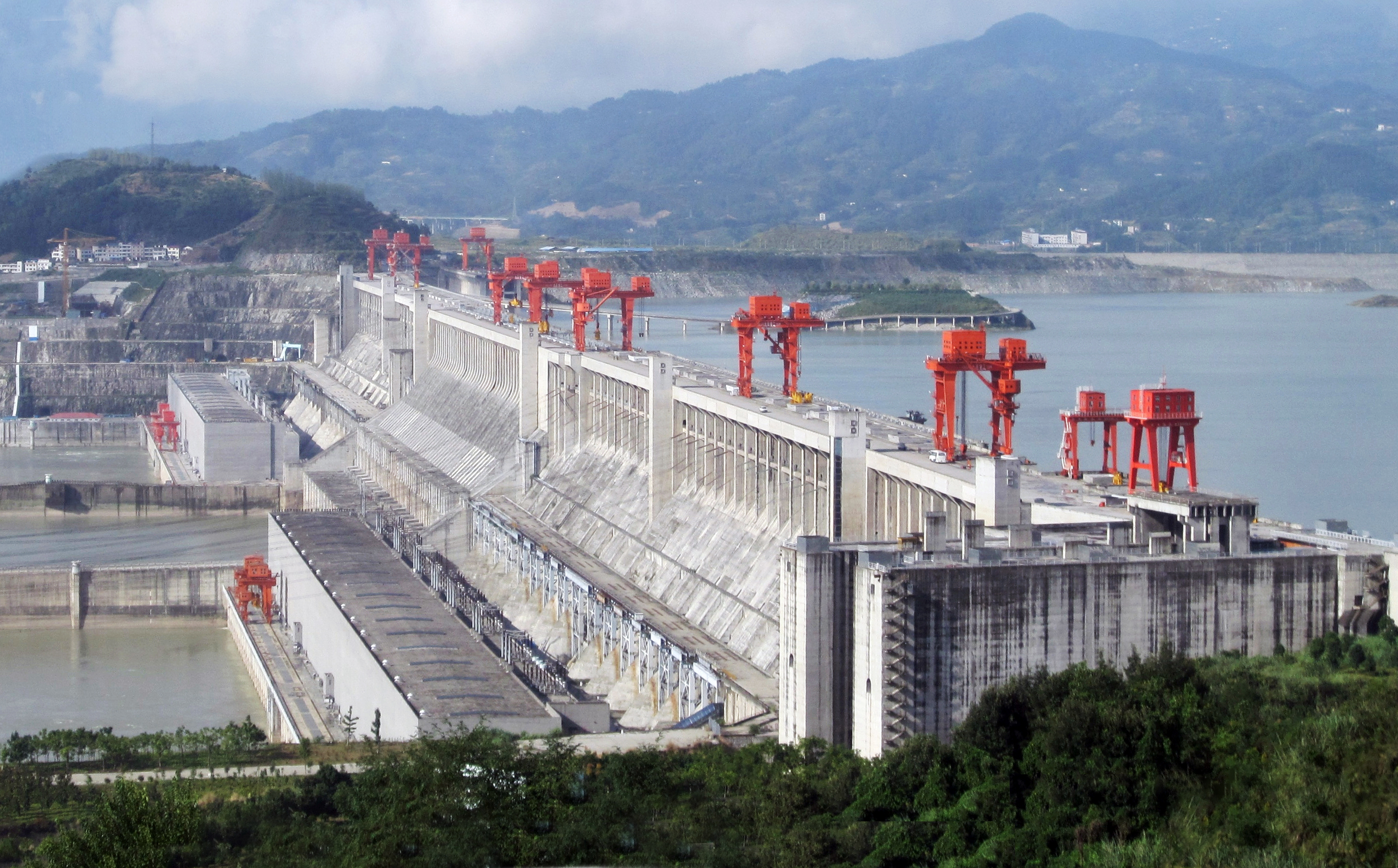|
Katakado Dam
Katakado Dam is a gravity dam on the Tadami River west of Aizubange in the Fukushima Prefecture of Japan. It was constructed between 1951 and 1953 for the purpose of hydroelectric Hydroelectricity, or hydroelectric power, is electricity generated from hydropower (water power). Hydropower supplies one sixth of the world's electricity, almost 4500 TWh in 2020, which is more than all other renewable sources combined and ... power generation. It supplies a 57 MW power station with water. See also * Yanaizu Dam – located upstream References Dams in Fukushima Prefecture Hydroelectric power stations in Japan Dams completed in 1953 Dams on the Tadami River Energy infrastructure completed in 1953 1953 establishments in Japan Gravity dams {{Japan-powerstation-stub ... [...More Info...] [...Related Items...] OR: [Wikipedia] [Google] [Baidu] |
Aizubange
Eryū-ji temple in Aizubange is a town located in Fukushima Prefecture, Japan. , the town had an estimated population of 15,159 in 5487 households, and a population density of 170 persons per km2. The total area of the town was . Geography Aizubange is located in the northern portion of the Aizu region of Fukushima Prefecture in the western part of Aizu Basin. The basin extends from the center of the town to the east and is relatively flat, with many paddy fields. On the other hand, the western part of the town has many forests. The Aga River flows from the east to the north of the town, and the Tadami River flows to the west. *Mountains : Mount Takadera *Rivers : Tadami River, Agakawa Neighboring municipalities Fukushima Prefecture *Aizuwakamatsu * Kitakata * Yanaizu * Yugawa *Aizumisato * Nishiaizu Climate Aizubange has a Humid continental climate (Köppen ''Dfb'') characterized by warm summers and cold winters with heavy snowfall. The average annual temperature in Aizuban ... [...More Info...] [...Related Items...] OR: [Wikipedia] [Google] [Baidu] |
Tohoku Electric Power
is an electric utility, servicing 7.6 million individual and corporate customers in six prefectures in Tōhoku region plus Niigata Prefecture. It provides electricity at 100 V, 50 Hz, though some area use 60 Hz. Tohoku Electric Power is the fourth-largest electric utility in Japan in terms of revenue, behind TEPCO, KEPCO and Chubu Electric Power. Shareholders * Nippon Life Insurance Company 3.9% * Japan Trustee Services Bank 3.8% * The Master Trust Bank of Japan 3.6% Accidents On 11 March 2011, several nuclear reactors in Japan were badly damaged by the 2011 Tōhoku earthquake and tsunami. In the Onagawa Nuclear Power Plant a fire broke out in the turbine section of the plant. In order to make up for the loss of electricity from the damaged reactor plant, Tohoku announced it would restart a mothballed natural gas power plant. The liquefied natural gas and oil-fired No. 1 unit at the Higashi Niigata plant in Niigata prefecture has a 350-megawatt capacity and co ... [...More Info...] [...Related Items...] OR: [Wikipedia] [Google] [Baidu] |
Tadami River
The is a major tributary of the Agano River in Japan. Its basin covers and its main stem is extensively regulated and developed for hydroelectric power. The river is located within Niigata, Gunma and Fukushima Prefectures. Dams Starting from the furthest upstream, the river is dammed by: * Okutadami Dam – tall gravity dam, 560 MW *Otori Dam – tall arch-gravity dam, 182 MW * Tagokura Dam – tall gravity dam, 380 MW *Tadami Dam – tall embankment dam, 65 MW *Taki Dam – tall gravity dam, 92 MW *Honna Dam – tall gravity dam, 78 MW *Uwada Dam – tall gravity dam, 63.9 MW *Miyashita Dam – tall gravity dam, 94 MW *Yanaizu Dam – tall gravity dam, 75 MW *Katakado Dam Katakado Dam is a gravity dam on the Tadami River west of Aizubange in the Fukushima Prefecture of Japan. It was constructed between 1951 and 1953 for the purpose of hydroelectric Hydroelectricity, or hydroelectric power, is electricity ... – tall gravity dam, 57 MW References ... [...More Info...] [...Related Items...] OR: [Wikipedia] [Google] [Baidu] |
Kaplan-type
The Kaplan turbine is a propeller-type water turbine which has adjustable blades. It was developed in 1913 by Austrian professor Viktor Kaplan, who combined automatically adjusted propeller blades with automatically adjusted wicket gates to achieve efficiency over a wide range of flow and water level. The Kaplan turbine was an evolution of the Francis turbine. Its invention allowed efficient power production in low-head applications which was not possible with Francis turbines. The head ranges from and the output ranges from 5 to 200 MW. Runner diameters are between . Turbines rotate at a constant rate, which varies from facility to facility. That rate ranges from as low as 54.5 rpm (Albeni Falls Dam) to 450 rpm. Kaplan turbines are now widely used throughout the world in high-flow, low-head power production. Development Viktor Kaplan, living in Brünn, Austria-Hungary (now Brno, Czechia), obtained his first patent for an adjustable blade propeller turbine in 1912. Bu ... [...More Info...] [...Related Items...] OR: [Wikipedia] [Google] [Baidu] |
Gravity Dam
A gravity dam is a dam constructed from concrete or stone masonry and designed to hold back water by using only the weight of the material and its resistance against the foundation to oppose the horizontal pressure of water pushing against it. Gravity dams are designed so that each section of the dam is stable and independent of any other dam section. Characteristics Gravity dams generally require stiff rock foundations of high bearing strength (slightly weathered to fresh), although in rare cases, they have been built on soil foundations. The bearing strength of the foundation limits the allowable position of the resultant force, influencing the overall stability. Also, the stiff nature of the gravity dam structure is unforgiving to differential foundation settlement, which can induce cracking of the dam structure. Gravity dams provide some advantages over embankment dams, the main advantage being that they can tolerate minor over-topping flows without damage, as the conc ... [...More Info...] [...Related Items...] OR: [Wikipedia] [Google] [Baidu] |
Fukushima Prefecture
Fukushima Prefecture (; ja, 福島県, Fukushima-ken, ) is a prefecture of Japan located in the Tōhoku region of Honshu. Fukushima Prefecture has a population of 1,810,286 () and has a geographic area of . Fukushima Prefecture borders Miyagi Prefecture and Yamagata Prefecture to the north, Niigata Prefecture to the west, Gunma Prefecture to the southwest, and Tochigi Prefecture and Ibaraki Prefecture to the south. Fukushima is the capital and Iwaki is the largest city of Fukushima Prefecture, with other major cities including Kōriyama, Aizuwakamatsu, and Sukagawa. Fukushima Prefecture is located on Japan's eastern Pacific coast at the southernmost part of the Tōhoku region, and is home to Lake Inawashiro, the fourth-largest lake in Japan. Fukushima Prefecture is the third-largest prefecture of Japan (after Hokkaido and Iwate Prefecture) and divided by mountain ranges into the three regions of Aizu, Nakadōri, and Hamadōri. History Prehistory The keyhol ... [...More Info...] [...Related Items...] OR: [Wikipedia] [Google] [Baidu] |
Japan
Japan ( ja, 日本, or , and formally , ''Nihonkoku'') is an island country in East Asia. It is situated in the northwest Pacific Ocean, and is bordered on the west by the Sea of Japan, while extending from the Sea of Okhotsk in the north toward the East China Sea, Philippine Sea, and Taiwan in the south. Japan is a part of the Ring of Fire, and spans an archipelago of 6852 islands covering ; the five main islands are Hokkaido, Honshu (the "mainland"), Shikoku, Kyushu, and Okinawa. Tokyo is the nation's capital and largest city, followed by Yokohama, Osaka, Nagoya, Sapporo, Fukuoka, Kobe, and Kyoto. Japan is the eleventh most populous country in the world, as well as one of the most densely populated and urbanized. About three-fourths of the country's terrain is mountainous, concentrating its population of 123.2 million on narrow coastal plains. Japan is divided into 47 administrative prefectures and eight traditional regions. The Greater Tokyo Ar ... [...More Info...] [...Related Items...] OR: [Wikipedia] [Google] [Baidu] |
Hydroelectric
Hydroelectricity, or hydroelectric power, is electricity generated from hydropower (water power). Hydropower supplies one sixth of the world's electricity, almost 4500 TWh in 2020, which is more than all other renewable sources combined and also more than nuclear power. Hydropower can provide large amounts of low-carbon electricity on demand, making it a key element for creating secure and clean electricity supply systems. A hydroelectric power station that has a dam and reservoir is a flexible source, since the amount of electricity produced can be increased or decreased in seconds or minutes in response to varying electricity demand. Once a hydroelectric complex is constructed, it produces no direct waste, and almost always emits considerably less greenhouse gas than fossil fuel-powered energy plants. [...More Info...] [...Related Items...] OR: [Wikipedia] [Google] [Baidu] |
Yanaizu Dam
Yanaizu Dam is a gravity dam on the Tadami River upstream of Yanaizu in the Fukushima Prefecture of Japan. It was constructed between December 1952 and August 1953 for the purpose of hydroelectric power generation. It supplies a 75 MW power station with water. See also *Katakado Dam Katakado Dam is a gravity dam on the Tadami River west of Aizubange in the Fukushima Prefecture of Japan. It was constructed between 1951 and 1953 for the purpose of hydroelectric Hydroelectricity, or hydroelectric power, is electricity ... – located downstream * Miyashita Dam – located upstream References Dams in Fukushima Prefecture Hydroelectric power stations in Japan Dams completed in 1953 Dams on the Tadami River Energy infrastructure completed in 1953 Gravity dams 1953 establishments in Japan {{Japan-powerstation-stub ... [...More Info...] [...Related Items...] OR: [Wikipedia] [Google] [Baidu] |
Dams In Fukushima Prefecture
A dam is a barrier that stops or restricts the flow of surface water or underground streams. Reservoirs created by dams not only suppress floods but also provide water for activities such as irrigation, human consumption, industrial use, aquaculture, and navigability. Hydropower is often used in conjunction with dams to generate electricity. A dam can also be used to collect or store water which can be evenly distributed between locations. Dams generally serve the primary purpose of retaining water, while other structures such as floodgates or levees (also known as dikes) are used to manage or prevent water flow into specific land regions. The earliest known dam is the Jawa Dam in Jordan, dating to 3,000 BC. The word ''dam'' can be traced back to Middle English, and before that, from Middle Dutch, as seen in the names of many old cities, such as Amsterdam and Rotterdam. History Ancient dams Early dam building took place in Mesopotamia and the Middle East. Dams were used ... [...More Info...] [...Related Items...] OR: [Wikipedia] [Google] [Baidu] |
Hydroelectric Power Stations In Japan
Hydroelectricity, or hydroelectric power, is electricity generated from hydropower (water power). Hydropower supplies one sixth of the world's electricity, almost 4500 TWh in 2020, which is more than all other renewable sources combined and also more than nuclear power. Hydropower can provide large amounts of low-carbon electricity on demand, making it a key element for creating secure and clean electricity supply systems. A hydroelectric power station that has a dam and reservoir is a flexible source, since the amount of electricity produced can be increased or decreased in seconds or minutes in response to varying electricity demand. Once a hydroelectric complex is constructed, it produces no direct waste, and almost always emits considerably less greenhouse gas than fossil fuel-powered energy plants. [...More Info...] [...Related Items...] OR: [Wikipedia] [Google] [Baidu] |




